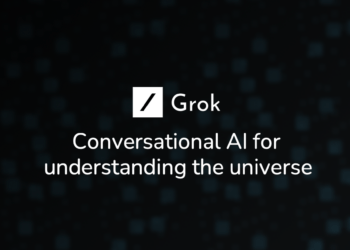– Objective: Please translate the following text from Spanish to English as accurately as possible, paying special attention to maintaining the original meaning and using idiomatic expressions and correct grammatical structures in English. The goal is for the translation to sound natural and fluent to a native speaker of English, avoiding any sense of awkwardness or error due to translation.
- Context: Artificial Intelligence
- Markdown: maintain the original markdown in the translation
- Text to translate:
The domain of natural language processing (NLP) and machine learning (ML) has become a crucial frontier for artificial intelligence, providing sophisticated tools that transcend superficial statistical analysis and advance towards the contextual understanding of texts. This article focuses on the advanced intersections of NLP and ML, specifically in sentiment analysis, an area where these two fields intertwine with powerful and transformative effects.
Theoretical Foundations: From Bag of Words to Contextual Models
Sentiment analysis as an application of NLP benefits from ML approaches that have evolved from simple models, such as the ‘Bag of Words’ (BoW) method, to deep neural network architectures like Convolutional Neural Networks (CNNs) and Recurrent Neural Networks (RNNs). The BoW approach ignored context and word sequence, while sequential methods significantly improved by considering the temporal nature of texts.
With the advent of attention mechanisms, like Transformer, a more sophisticated mechanism is introduced that allows models to identify the relevance of different parts of a text in relation to the rest, thus aiding in a better understanding of the semantic and syntactic nuances necessary for sentiment analysis.
Advances in Algorithms: Bidirectional Encoder Representations from Transformers (BERT) and Generative Algorithms
BERT marks a turning point in NLP as it uses a bidirectional attention mechanism, paying attention to each word in context to obtain richer representations. NLP tasks, including sentiment analysis, benefit from its ability to handle ambiguities and complex linguistic expressions.
In addition, generative algorithms, such as Generative Adversarial Networks (GANs) and Generative Pre-trained Language Models (GPT), have opened new avenues for sentiment analysis. These algorithms can generate synthetic text that serves to expand datasets or to test the reach of analytical models in fictitious data scenarios, maintaining high quality and believable linguistic properties.
Emerging Practical Applications: Beyond Product Opinion
Initially, sentiment analysis focused on assessing products or services. Today, its scope extends to detecting emotions and opinions in social media data, enabling organizations to capture public perception on current issues, political elections, or even mental health monitoring through the emotional tone of postings.
An emerging application is market sentiment monitoring in the financial sector, where the analysis of news and forum postings can provide early indicators of movements in the stock market.
Comparison with Previous Work: Recognizing Limitations and Overcoming Them
It’s important to recognize the limitations of previous work, such as the inability to capture sarcasm or irony, and the difficulty in handling unstructured data. Current advancements, including the fine-tuning of pre-trained models on specialized datasets, have improved these capabilities, although they remain an active area of research.
The integration of multimodal data, combining text with audiovisual information, has emerged as a response to these limitations, allowing for richer models that can interpret a wider range of human expressions.
Projecting Future Directions: Towards Empathic Human-AI Communication
The future evolution of sentiment analysis in NLP points towards increasingly empathic systems, capable of interacting with humans in an effective and affective way. Artificial emotional intelligence is becoming a highly important research field, promising communication between humans and AI systems with unprecedented emotional sensitivity.
Case Study Support: Examples from Real Situations
One of the most resonant examples is the use of sentiment analysis to manage real-time customer relationships. In call centers and online support platforms, sentiment analysis systems detect customer dissatisfaction and alert operators, allowing proactive responses to improve user experience.
Another relevant case study is the use of sentiment analysis during the COVID-19 pandemic, where health authorities analyzed social media opinions to gauge public mood and refine health communication strategies.
Conclusion: The Frontier of Sensitivity in AI
In summary, sentiment analysis and NLP are on a converging trajectory towards an artificial intelligence that approaches the understanding and expression of human emotions in a precise and meaningful way. This not only redefines human-AI interaction models but also proposes a new era in data-driven decision making, providing emotional perspectives in the automatic evaluation of texts from multiple sources and formats. We are moving toward a horizon where AI not only understands “what” we say but also “how” we say it, opening up exciting and challenging possibilities for science and society.






















